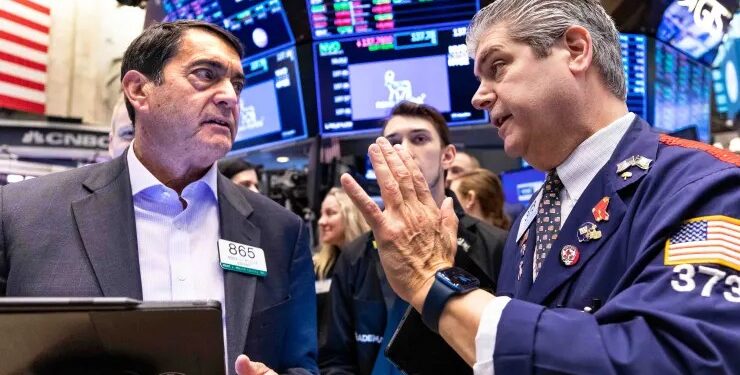The Dow Jones Industrial Average soared to an all-time high this week, taking flight after the Federal Reserve signaled interest rate cuts next year.
The good times on Wall Street stretch back months. Since October, the S&P 500 — the index that most people’s 401(k)’s track — has climbed roughly 15%.
Analysts who spoke to ABC News warned that the market run is bound to slow in the coming days or months, however, since investor enthusiasm typically loses momentum when the gains are perceived to outstrip those warranted by the economic outlook.
Still, analysts voiced optimism about market performance over the next year as the Fed appears poised to achieve a “soft landing” in which inflation returns to normal levels while the economy averts a serious recession.
“The market seems to think the Fed has cracked the code,” Amanda Agati, chief investment officer at PNC Financial Services, told ABC News.
Inflation has fallen significantly from a peak of about 9% last summer but remains more than a percentage point higher than the Fed’s target.
At its meeting this week, the Fed decided to leave interest rates unchanged, extending a pause of a near-historic series of rate hikes deployed to cool fast-rising prices. Going further, the Fed said it expects to impose three quarter-point interest rate cuts next year.
Interest rate cuts bode well for stocks for two reasons: their concrete effects and where they indicate the U.S. economy is headed, Callie Cox, an investment analyst at financial services company eToro, told ABC News.
When rates go down, borrowing becomes less expensive for businesses and consumers, propelling companies to invest in new projects and everyday people to stretch for bigger purchases.
All that spending and investment fuels economic activity, raising company valuations and pushing stock prices higher, Cox said.
In a larger sense, rate cuts signal to observers that the central bank is optimistic about its fight against high prices and confident that it can begin taking the brakes off of the economy, Cox added. That message elicits a sunny view from investors.
“Rates are levers for the economy,” Cox said. “When rates are lower, people feel more optimistic and are more likely to spend and invest.”
Expectations of rate cuts, however, will not sustain an unbroken market rally over the coming days or months, analysts said.
Forward-looking investors are now anticipating the rate cuts, leaving less room for a boost when the policies go into effect, Mark Zandi, chief economist at Moody’s Analytics, previously told ABC News.
“I wouldn’t count on stock prices continuing to rocket higher,” Zandi said. “The window on that is probably already closing.”

Agati, of PNC Financial Services, echoed that view. “The Fed talking rate cuts as the catalyst to keep the torrid market frothy is going to disappear going toward the end of the year,” Agati said.
When adopting a longer-term view, the analysts expressed hope about strong market performance over the next calendar year.
As inflation nears normal levels and hiring remains robust, many economists expect the U.S. to achieve a soft landing. That type of outcome would help companies thrive and stock values climb, analysts said.
“If the Fed does pull this off, prices could move even higher from here,” said Cox, of eToro.
Still, potential pitfalls abound. If inflation proves more stubborn than expected, the Fed may delay its rate cuts, Dave Sekera, chief U.S. market strategist at Morningstar, told ABC News.
“That’s the biggest near-term risk to the market,” Sekera said.
But the economy will likely avert a major stumbling block next year, Sekera added, allowing inflation to reach the Fed’s target rate while avoiding a downturn.
“There will be a slowdown in the rate of economic growth, but no recession,” Sekera said.
Source: abcNEWS



Recent Comments